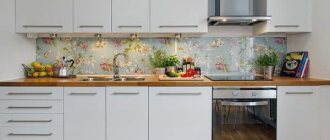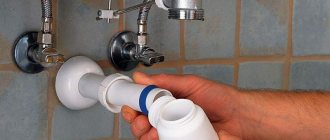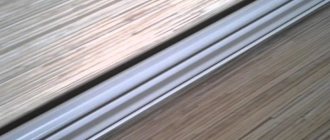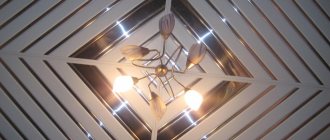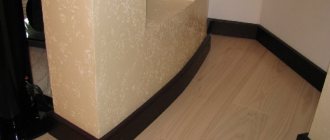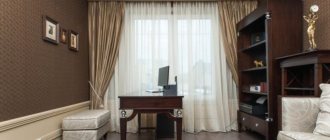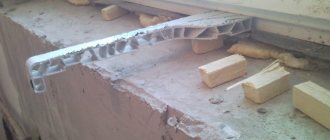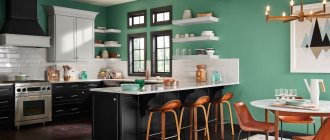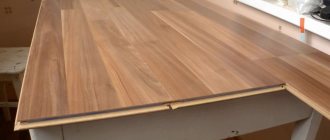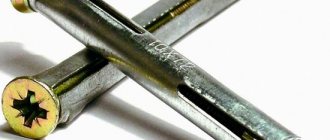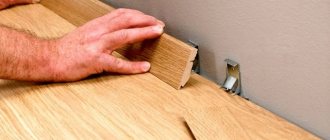Kitchen decoration is important. After all, a person spends a lot of time here. Therefore, it is more pleasant to see an original design every day than just ordinary white walls. Thanks to a huge selection of finishing materials, it’s easy for us to find one that suits your design ideas and financial capabilities. In recent years, more and more builders are choosing MDF panels or sheets to decorate any part of the house, the kitchen is no exception. MDF, what kind of material is this? Due to good resistance to temperature changes and humidity MDF sheets will be an excellent solution for installing a kitchen apron.
Kitchen apron
A decade ago, it was impossible to use MDF panels for kitchen splashbacks due to the large thickness of the sheets and their unesthetic appearance. But now, thanks to new technological processes in the production of moisture-resistant MDF, the opportunity to implement different design solutions has become real.
If previously the main material used for the apron was tile, now owners have the opportunity to purchase a cheaper and easier-to-install finishing building material, MDF panels.
The kitchen is very capricious in terms of materials used for finishing, especially the area where the apron is located. It is this part that is exposed to external stimuli every day:
- humidity;
- heat.
So you should pay more attention to the characteristics of the finishing material you choose.
Kitchen apron
Those who want to decorate their kitchen do not always have the opportunity, in addition to purchasing all the necessary building materials, to also pay for the services of builders. And let's face it, hired workers often suck. Therefore, more and more people decide to do their own repairs.
This also raises a number of questions:
- how to install a kitchen apron made of MDF sheets?
- what materials are needed for installing MDF?
- What is better and how to attach a kitchen apron made of MDF?
- Is it possible to install a kitchen apron from MDF with your own hands?
- How to install an MDF apron in a kitchen, step-by-step instructions.
You will find answers to each of these questions here.
Advantages of wall panels
Main advantages:
- Easy to install. One piece covers a large area.
- Save time. Many people value these materials for their speed of installation.
- Wall defects are masked.
- Acceptable price. Cladding is cheaper than tile adhesive.
- The surface is quickly washed and protects the base from water.
Panel selection criteria
Features of the room are taken into account when purchasing panels:
- Humidity indicator and optimal temperature. The microclimate in the room affects the condition of the furniture. Finishing materials must withstand aggressive influences well.
- Plaque on surfaces appears due to the constant adhesion of fat. These components make maintenance difficult and negatively affect various surfaces.
- Various chemical compounds are formed during use. Aprons can withstand such exposure and do not corrode.
Products must be visually attractive and durable
This makes it possible to create an interesting design that is practical.
Types of wall panels:
- Natural wood with an unusual design. They fit into any interior and can withstand heavy loads.
- MDF panels for the kitchen, like chipboard and fiberboard, resist external factors well.
- PVC is a durable and versatile coating with a wide range of textures and colors.
Wooden aprons are treated with moisture-resistant material for protection
Purpose
First of all, it is worth identifying the goal.
What is a kitchen apron? This is the space between the dining area and the hanging cabinets.
We can say that the apron is the face of the kitchen. Therefore, its color must be combined with the rest of the kitchen design.
It is also necessary to fulfill a number of conditions that the selected finishing material must meet:
- high practicality , especially with regard to the ability to clean the apron from dirt;
- resistance to high temperatures;
- moisture resistance;
- resistance to various chemicals such as detergents;
- long service life.
Since the apron is located in the kitchen work area, you need to provide as many items from the list as possible. By choosing MDF material as a kitchen apron, you will additionally protect the walls from: water, soot, grease and other external irritants. Panels for bathroom furniture also meet all these requirements.
Tile processing
After installing tiles in the kitchen, it is important to treat them. If it is necessary to make a hole for an electrical outlet, then the outline is outlined from the back side, after which the hole is cut with a diamond drill
If you just need to cut kitchen tiles to fit a non-standard shape, just mark the cut with a pencil and use a tile cutter.
- After laying, you need to wait a day and carefully tap the tiles to identify potential voids that sometimes form behind them. Tiles with voids must be re-glued.
- Next, it is necessary to grout the joints, which is carried out strictly after all surfaces have been washed with warm water and a selective detergent.
- The grout is diluted and rubbed into the seams using a rubber spatula. Wait a little until it dries and remove its remains. Next, you need to wait another two days and wash everything thoroughly again.
Advantages and disadvantages
Whatever finishing material you choose, it will always have a number of advantages and disadvantages, so it is important to determine the characteristics before purchasing. Attaching an apron to a kitchen made of MDF will allow you to achieve the following possibilities:
- environmental friendliness in the production of the material. This point is especially important because food is prepared in the kitchen.
- the ability to easily remove dirt from the apron. Even the use of chemical detergents does not harm the color of the panel, and the apron can delight you with its gloss for many years.
- MDF has high resistance to temperature changes. Even the proximity of the gas stove to the apron does not deform the material.
- the material is resistant to sunlight.
- moisture-resistant laminated wall panels can withstand humidity up to 80%. And even exposure to hot steam.
- good impact protection.
- the low weight of the material makes it easy to install in the right place, even if it is large (solid). Uneven walls do not bother him.
- It’s easy to install an MDF apron in the kitchen with your own hands, even if the wall is not completely flat.
- When installing an apron in a kitchen from wall panels, improvised means are used for interior decoration, and there is no need to purchase additional tools.
- a rich color palette, and the ability to apply a variety of photographs on the film surface of MDF sheets, helps you choose the design you need to match the rest of your kitchen decor.
- the low cost of MDF panels makes it easy to change the interior to your taste. Attaching a kitchen apron made of MDF material will help significantly save your construction budget. In this case, there is no need to remove the furniture; the old apron is simply and easily dismantled and a new one is installed in its place.
- this often applies to photographs. The price of installing an apron in an MDF kitchen depends on the size and design of the room.
- long service life of the material. Manufacturers guarantee up to 5-7 years of service life.
All the advantages of MDF panels are achieved through unique production technology.
As for the disadvantages, this building material has few of them:
- MDF is highly flammable, so an open fire falling directly on the panel can even deform the apron for a short time. When an apron burns, toxic substances begin to enter the air, which have a detrimental effect on health.
- There are a number of restrictions on chemical compounds that cannot be used to process MDF aprons. This list includes all substances containing acetone and other solvent reagents. Only household detergents can be used for washing.
- Sometimes, if the slab is not fastened correctly, the apron may move away from the wall , but this defect can be easily corrected by installing it correctly again.
By comparing the positive and negative aspects, you will already decide whether to choose this material for repairs or not.
Suitable materials
The walls are lined with the following materials:
- PVC.
- Durable glass.
- Natural wood or MDF panels.
- Tile.
Plastic panels are used more often than other materials. PVC is available and produced in different colors.
Textures like natural wood or stone
Paintings or photo printing look impressive.
Advantages of plastic:
- Moisture resistance.
- Hygiene.
- Easy to care for.
- Easy to install.
The plastic cover is installed on your own.
MDF panels are affordable and practical. They look beautiful
The kitchen uses cladding covered with laminate on both sides. It protects against mold and moisture. The surfaces are light and durable, and grease does not stick to them. Changes in humidity do not deform the coating.
Tempered glass cladding is the most expensive
The coating can withstand impacts, liquids and mildew. There are no scratches on the front side. Laminated plywood is resistant to liquids. The top of the sheets is covered with plastic. This is a good method for organizing a kitchen. The environmentally friendly product is perfectly protected from moisture. Melts on contact with open flame. Artificial stone is strong, moisture-resistant, and does not melt. The coating will last for decades.
Environmentally friendly coating does not contain aggressive chemicals or acids
How to install correctly - installation options
How to install an apron in the kitchen from MDF sheets? And although the process of installing an MDF apron is quite simple, there are several issues that a novice installer may encounter. There are many videos on the Internet of installing an apron in a kitchen made from MDF material.
Basically, the nuances relate to the quality of work and if you follow the instructions, the result will leave you satisfied.
Below is a step-by-step installation of an apron in a kitchen made from MDF panels. Here is a list of preliminary work before installing the MDF apron. Take correct measurements of the work area. Thanks to the ease of processing MDF panels, you can give the desired shape to the apron. Much depends on how long you plan for the apron.
Some owners want the space from the bottom of the cabinets to the floor to be covered with an MDF sheet. In this case, you need to measure the space from the bottom of the wall cabinet to the floor.
And additionally add another 20 centimeters to the value so that the panel extends slightly under the hanging cabinets. This approach will provide additional aesthetics to the design.
This method is effective if the lower part of the kitchen unit is not solid. Otherwise, you will overpay for extra meters of material, which no one will see anyway, but the strength of the structure will be much higher.
Red single brick is the most commonly used among all types of bricks in construction. Here is its size.
It is almost impossible to carry out interior finishing work without putty. Here you will find out how long the putty takes to dry.
Today it is impossible to find a single building in the construction of which sand would not be used. By clicking on the link, you will become familiar with the heat capacity of sand.
Partial fastening method
Another option for attaching a kitchen apron made of MDF is partial. You do not overpay for extra meters and attach only the visible part of the apron between the tabletop and shelves. Fasten the MDF panel with a margin of about 25 cm, this will allow you to additionally fix the apron plate.
Horizontal measurements are also important, especially if there are sockets or switches in the kitchen splashback area. To do this, make a pattern with marked places where the sockets are located.
Take into account protrusions and other nuances that arise during installation. The template you have made will help you cut the MDF sheet exactly to your measurements.
How to install in the kitchen
How to hang an MDF apron in the kitchen? After the preliminary work necessary for correct fastening of the apron, you can install the MDF sheet itself.
Work carried out using a frame structure takes more time, but provides additional reinforcement and a longer service life without defects. How to fix an MDF apron in the kitchen using the frame method? The work area assembled from parts allows you to quickly assemble the apron.
How to install with self-tapping screws
How to attach a kitchen apron made of MDF with self-tapping screws? Here you will also need planks on which the entire structure will be supported. It also needs to be treated with special antiseptics. Then, in the marked places along the perimeter of the planks, MDF sheets are attached to dowels .
It is better to fasten an MDF apron for the kitchen with help to avoid defects. Below is a video on how to attach an MDF apron in the kitchen using self-tapping screws.
For more information about installing a kitchen apron made of MDF, watch the video:
Bonding technology
Below we will talk about the nuances of gluing an apron made of various materials.
The general operating procedure is as follows:
Before starting work, it is necessary to tidy up the surfaces that are to be fastened with liquid nails:
It is also important to remember the temperature of the materials. In order for the composition to take well, their temperature must be in a certain range.
Air temperature also matters:
Some representatives of polymer adhesives cope with their task even in cold weather.
When all factors are taken into account, you can move on to the second stage:
Let's get down to the main thing - applying liquid nails to one of the surfaces.
There are several application methods:
Immediately after applying the glue, the object must be pressed as closely as possible to the surface, fixing it in a constant position for 10–15 minutes.
You can fix it using:
To prevent the glue from going beyond the joint, the borders can be covered with a toothpick placed on top.
If excess has already appeared, it can be washed off using:
If glue accidentally gets on a porous surface, it must be allowed to dry and then carefully cut off.
Preparing the work area before hanging the kitchen apron - step by step
Once you have made all the measurements, you can purchase an MDF panel. Now it’s time to prepare the working area and all the materials you need for installation.
Although the panel is attached to an uneven wall surface, it is better to remove strongly protruding defects.
To protect yourself from the growth of various fungi on the wall after installing the apron, it is advisable to first clean the surface of the wall, removing all old materials, such as wallpaper.
Removing old wallpaper
Then treat with special means . But this is at the discretion of the owner.
Wall treatment with special means
To ensure uniform fastening of the apron, it is necessary to install a special strip. For these purposes, you can buy a special one or simply install a rail; it is removed after installing the panel.
What can you attach to?
How to attach an apron for the kitchen from MDF, or rather, what to hang it on? For these purposes you can use:
- adhesive composition ( liquid nails) ;
Liquid Nails
- aluminum frame;
- dowels
Depending on the method you choose, you will need to buy related materials.
What can be glued with liquid nails?
The special composition provides excellent adhesion to the surface of such materials as:
Surfaces can also be very different:
In the instructions for the glue you will not find all types of bases from this list - however, you can rest assured that home craftsmen have already tried everything. And below we will describe some apron options that you can make with your own hands.
Supporters of liquid nails claim that only classic nails can be better than them. The viscous composition is capable of forming the strongest possible adhesion of materials, allowing even heavy and large structures to be firmly secured.
However, this gluing method also has malicious critics. Some people complain about the discrepancy between price and quality, others about too much material consumption.
As a rule, these people simply do not know how to use liquid nails correctly. We have prepared a small cheat sheet for you. But first, let's look at what requirements apply to the surface being glued.
How to install and secure MDF panels to the wall with your own hands
How to attach MDF to the wall? To attach the apron to liquid nails, you will need the following materials:
- The liquid glue itself.
- Decorative plinth, which is installed after attaching the apron between the table top and the wall.
This method helps to avoid additional costs for purchasing a frame, for example, and also to carry out all the work cleanly without waste, without even removing the furniture from the kitchen. How to glue MDF to the wall?
Liquid nails should be applied around the perimeter of the entire panel and in the middle at an equal distance of 20 cm.
Fastening with liquid nails
If you did not install the mounting rail, you will have to hold the panel with your hands until the glue is completely dry.
How to attach an MDF kitchen apron to an aluminum profile ? This method will require additional costs for the purchase of materials for installing the frame. The advantage of this method is the additional strength of the apron without the fear that the structure will deform.
Attaching an apron to an aluminum profile
The ability to install an apron even on a slightly defective wall without pre-treatment. Nowadays it’s not difficult to find a video of attaching an apron in an MDF kitchen using a frame structure. You just need a number of additional materials.
How to fix a kitchen apron made of MDF using self-tapping screws? This method is messier and will require purchasing dowels and placing them along the sheathing strips. When cutting MDF planks and sheets, it is better to use a fine-toothed hacksaw, which will ensure a more even cut.
Main types
There are only 3 main types of plastic aprons. They differ in performance characteristics.
From ABS
These are flexible panels that are made 600 mm wide, 1.5 or 2 mm thick, 2 or 3 m long. The sheets are made of polymer material, the abbreviation stands for: A - acrylonitrile, B - butadiene, C - styrene.
Most often, the design is applied to the panels using photo printing. Firms either provide their own design options or adapt to customers. At the individual request of the client, a drawing can be made and the size of the panel selected.
Advantages of ABS sheets:
Acrylic glass
This material looks just like glass. Such panels come in glossy and matte. The sheets are flexible and smooth. Most often, such aprons are sold ready-made.
Images are applied using photo printing on the inside. The dimensions are standard: width is 600 mm, thickness – 3 or 4 mm, length – 2 or 3 m.
Advantages of an acrylic glass apron:
PVC
These are sheets of their polyvinyl chloride. This option is the most economical. The products are produced in 2 formats: slatted and sheet. Panels are most often sold in sizes 950*480*3 mm. Rack material can be 3000*100*10 mm, 3000*195*12 mm, etc. PVC apron can be glossy or matte. The design is applied by photo printing and varnished on top.
Disadvantages of a PVC apron:
Recommendations
Be sure to combine the apron with the interior of the room. If the main surface is matte, then it should be matte. Light colors will help visually expand the room, while bright colors will help refresh it. The layout can be carried out in rows, when each row is installed following the previous one, as well as the square-cluster method, when the emphasis is no longer on the rows, but on small areas.
You can make interesting patterns using special tiles with decorative elements, as well as paintings, drawings, and so on. Then the process of how to stick corner or other tiles to the kitchen will become even more interesting.
latest comments
Cutting MDF sheets
MDF is cut quite easily with any tool designed for cutting wood with a small and sharp tooth. The use of a large tooth leads to crumbling and delamination of the material, as well as unevenness of the cut end. Recommended Tool:
- Hacksaw for metal.
- Hacksaw for wort.
- Electric jigsaw.
- Hand-held electric circular saw with fine pobedit teeth.
Cutting MDF sheet with a circular saw
If there is an image on the panels, you should carefully adjust the details of the picture, both horizontally and vertically. The joint of a correctly fitted pattern will be less noticeable and, conversely, the displacement will introduce an imbalance in the image, which will be noticeable at first glance.
